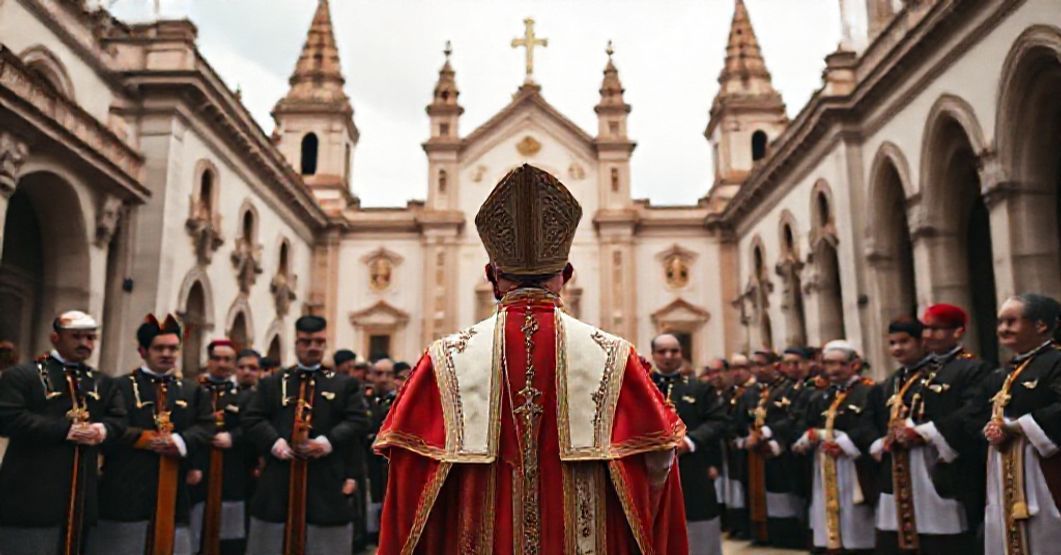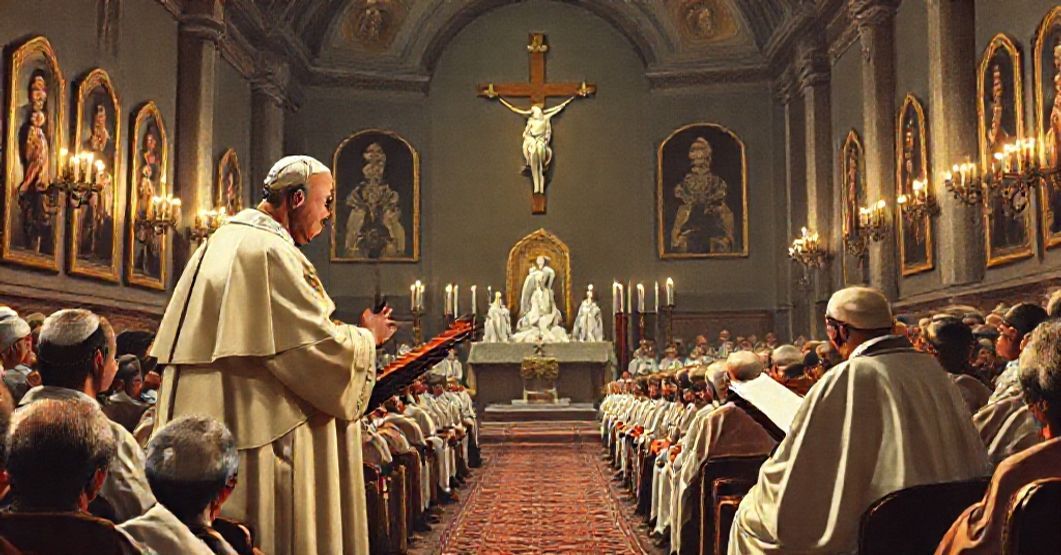Antipopes of the Antichurch



















Timeline of this heretical pontiff
Encyclical Letters
+ 15 posts1959
+ 7 posts1961
+ 4 posts1962
+ 2 posts1963
+ 2 postsApostolic Exhortations
+ 3 postsApostolic Constitutions
+ 93 posts1958
+ 6 posts1959
+ 87 postsMotu Proprio
+ 15 posts1958
+ 1 posts1959
+ 1 posts1962
+ 11 postsApostolic Letters
+ 151 posts1958
+ 4 posts1959
+ 63 posts1960
+ 78 posts1961
+ 1 posts1962
+ 4 posts1963
+ 1 postsSpeeches
+ 99 posts1958
+ 2 posts1959
+ 26 posts1960
+ 29 posts1961
+ 16 posts1962
+ 24 postsMessages
+ 6 posts1959
+ 4 postsHomilies
+ 4 postsLetters
+ 152 posts1958
+ 1 posts1959
+ 48 posts1960
+ 32 posts1961
+ 31 posts1962
+ 30 posts1963
+ 10 postsNot categorized
+ 1 posts1958
+ 1 postsNews feed


Allocutio Ioannis XXIII (1962.06.20)
On June 20, 1962, John XXIII, at the close of the seventh session of the Central Preparatory Commission for Vatican II, delivers a triumphant allocution: he rejoices that three years of preparatory work have been completed; he recalls the “spark” of the council’s idea at St Paul Outside the Walls in 1959; he praises the commissions, laity, and experts; he presents the council as a “mystical tower” promising peace, abundance, unity, and renewal for the Church and the world; he exhorts the bishops to return home and inflame enthusiasm, prayer, and confidence in the approaching council, proposing meditations especially on the Gospel of John as spiritual preparation. The entire discourse is a serene self-congratulation of a new project that, under pious language, already displaces the divine constitution of the Church with a humanistic, democratized, media-driven enterprise — the embryo of the conciliar sect that would soon eclipse, in men’s eyes, the visible rights of Christ the King and the immutable Faith.


Seguntinae (1959.03.09)
The document issued by John XXIII under the title “Seguntinae” solemnly decrees that the diocese of Seguntina in Spain shall henceforth bear the combined name Seguntina-Guadalajarensis, elevates the church of the Blessed Virgin Mary in Guadalajara to the dignity of a concathedral, and regulates the residence of the bishop and the rights of canons accordingly; wrapped in the language of juridical precision and Marian piety, it presents itself as a benign adjustment of ecclesiastical structures in harmony with the 1953 Concordat with Spain. Behind this apparently innocuous administrative act stands the signature and program of the man who inaugurated the conciliar subversion: a calculated, bureaucratic prelude to the dismantling of the visible structures of the Catholic Church in favour of the coming conciliar sect.


Allocutio Ioannis XXIII ad conventum vocationum (1962.05.26)
John XXIII’s allocution of 26 May 1962 to participants of the first international meeting on priestly vocations presents a serene, optimistic exhortation: delegates from all nations are thanked, difficulties are acknowledged but downplayed, and the solution is sought in prayer for “holy, wise, active priests” and in exemplary clergy whose virtues will attract youth to the seminary. The speech insists on confidence, rejects “lamentations,” and sketches a pious but deliberately simplified image of priestly life focused on moral example, moderated activity, and encouragement of vocations through family and parish witness.


OXOMENSIS (SORIANA) (1959.03.09)
This Latin act of John XXIII, under the title Constitutio Apostolica Oxomensis (Soriana), announces the juridical coupling of the name “Soriana” to the diocese of Osma (Oxomensis) in Spain and elevates the church of St Peter in Soria to the rank of a concatedral, assigning it corresponding rights and obligations, and commissioning the then “Apostolic Nuncio” to implement these measures according to the 1953 Concordat with Spain. The entire text is a perfectly polished piece of canonical-administrative prose which, while externally conservative, manifests the new regime of usurpation already underway: a paramasonic, conciliarized structure using the shell of Catholic legalism to prepare the ecclesiological revolution of Vatican II.
Varia
Announcement:
– News feed –implemented
– Antipopes separate web sites with their all documents refutation – in progress
